This is an odd review because rather than being a review of a camera, it is a review of a Lego model of a camera.
For my {hurumphty}3 rd birthday, one of my sons and his wife bought me a special indulgence, based around what they know of my love of photography and of model-making.
When I was three (hurumphety years ago!) my engineer father bought me a Meccano set. He was a little disappointed that I didn’t do too well with the little screws. The following Christmas I got my first Lego set (which made a vintage black car), those extra months and the more child-friendly construction kit worked wonders and I’ve had a soft spot for the Danish bricks ever since.
Lego’s take on the Land Camera 1000 (known in the US as the OneStep) is a remarkably faithful reproduction of a point-and-shoot camera Polaroid released in 1972 and which took the same SX-70 time zero film cartridge as the sophisticated Folding SX-70 camera.
The 1000 had a fixed focus single element lens of 103mm focal length and sported an aperture of f/14.6. Everything down to about 4ft was in focus and the camera featured a compensation dial around the light sensor. The whole thing was built around the idea of just pressing the button and the camera motoring out a plastic card on which your picture magically appeared – all without having to go to a chemist to get it developed. It was instant photography and everyone knew it would never catch on…
Fast forward 53 years and analogue instant photography is – against all the odds – still going. Not only is it still going, but people are paying homage!
I marvelled in a previous review at the Rollei A110 camera, which was made up of over 260 separate components. The Lego Polaroid camera beats that with 516 separate pieces – all of which you need to get in the right place.
To achieve this you follow through a glossy printed instruction manual – none of those quick-start guides or urls to a version on the internet – and it is just as well. The instructions cover 117 pages to take you through the entire assembly process.
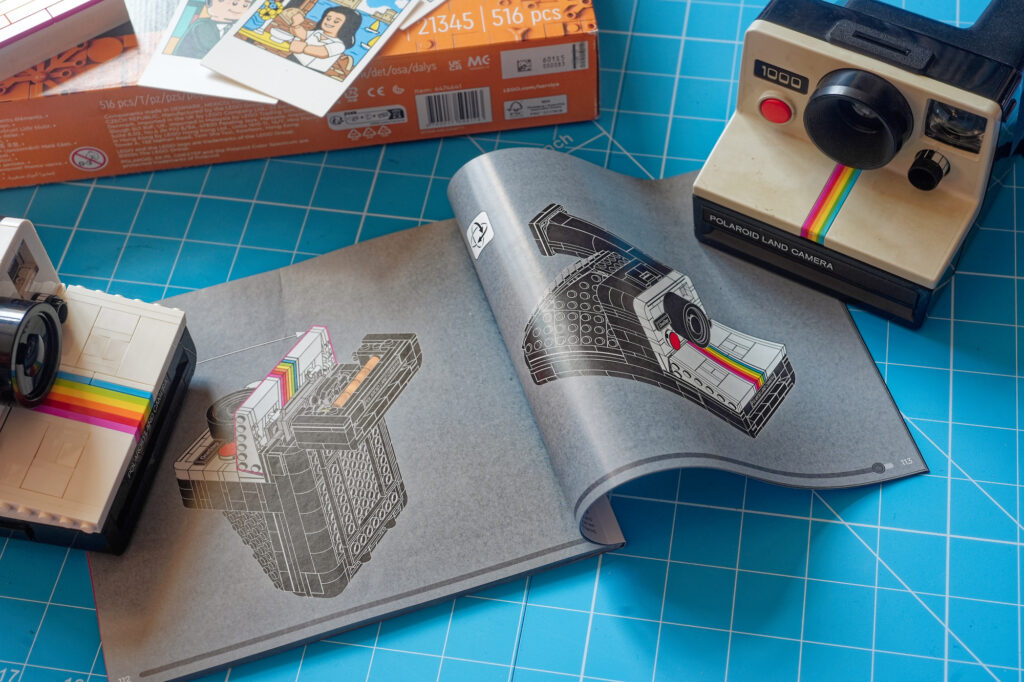
When you complete your task, you get an amazingly faithful model – OK so it doesn’t get an actual transparent lens, but its looky-likey is actually made up of more elements than the original camera lens had. It doesn’t take pictures (instant or otherwise), but it does have a working viewfinder and when you press the shutter release, it does actually eject a card!
It is impressive just how close whoever came up with this for Lego have got to the original. It would have been easy to make some large one-off pieces to deal with the angled sections, but this is built with what I would imagine are fairly standard bricks (remembering the days of just using the old 2×1, 2×3 and 2×4 lego bricks ended around the time the original camera was released). They have even modelled the stripes in different coloured bricks, rather than just resorting to a sticker.
In fact, it seemed so close that I remembered that I had a similar camera up in the blanket box next to my bed – when I unearthed the original I was amazed at just how close the Lego version had got.
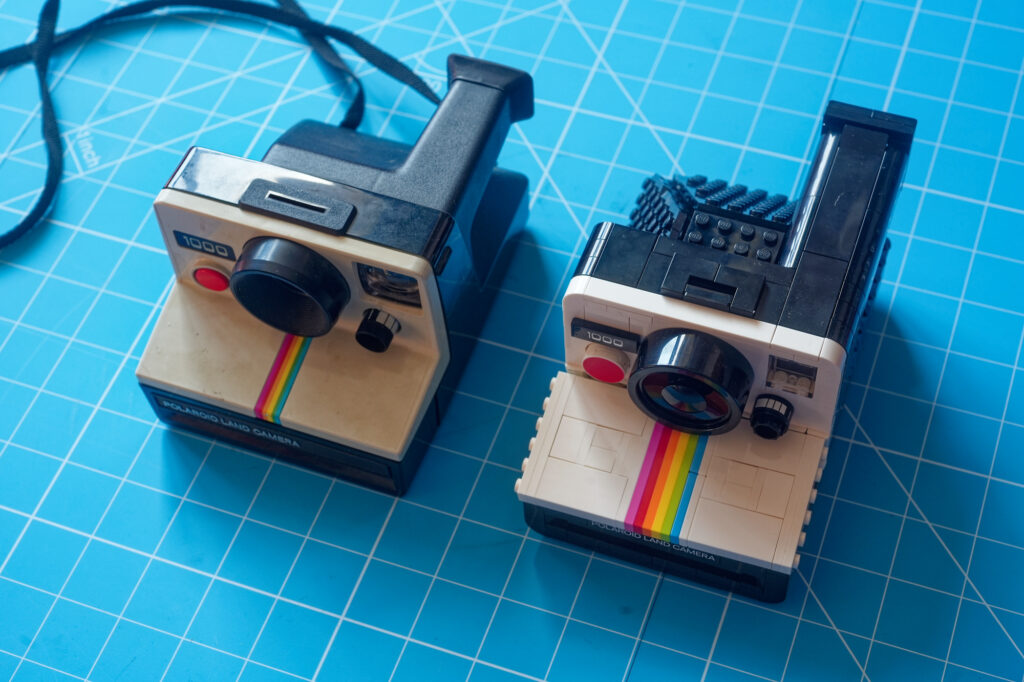
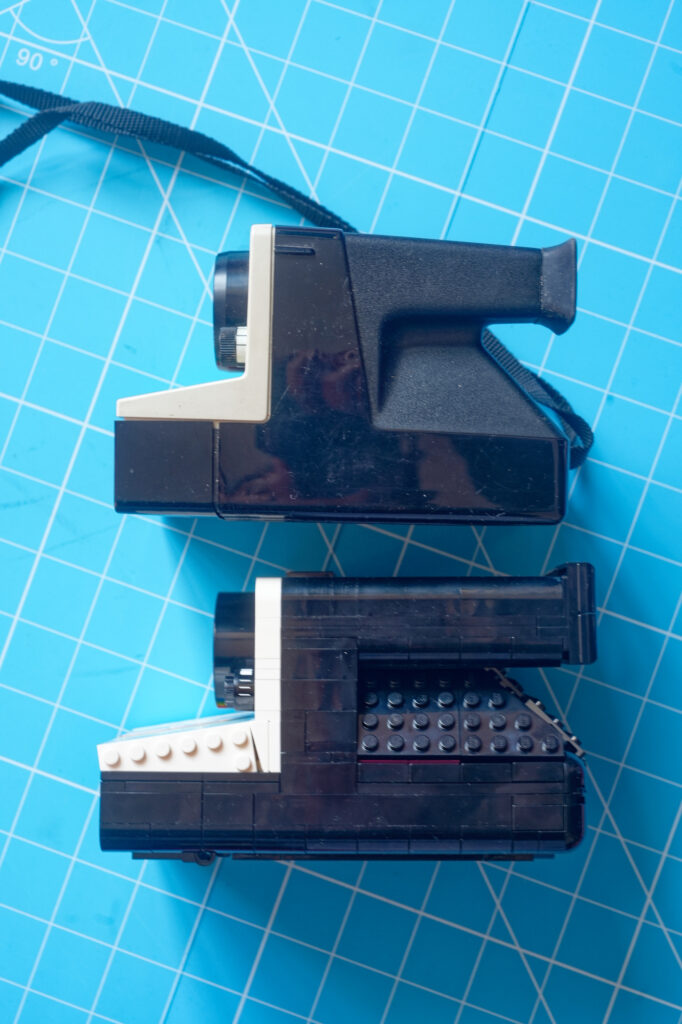
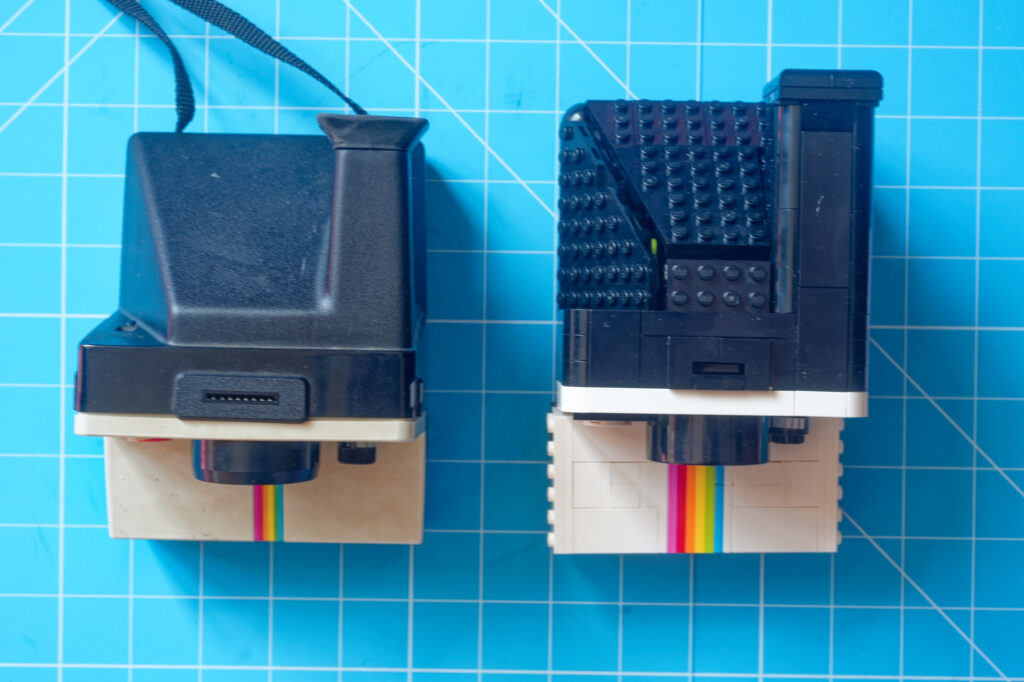
It was only when I saw the original camera that I realised I’d put the sticker on the compensation dial the wrong way around.
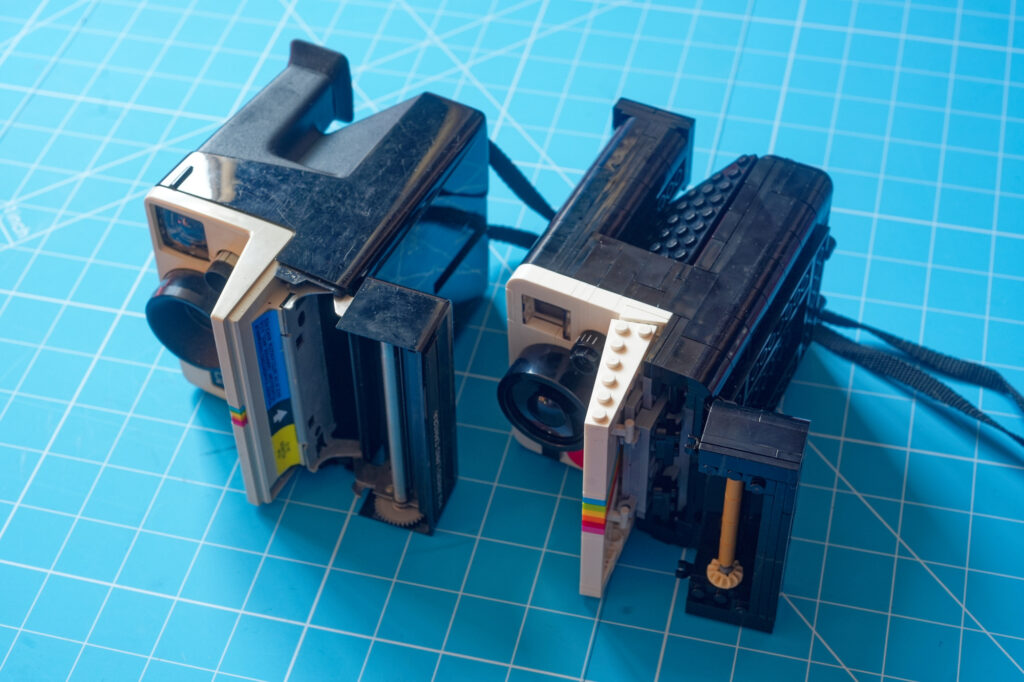
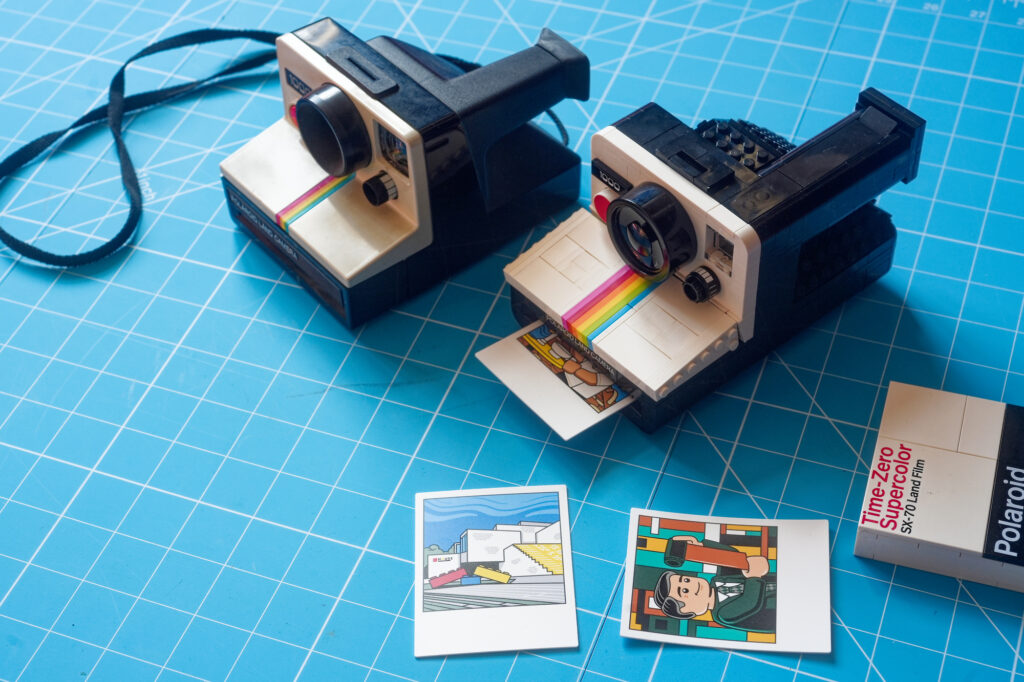
To move back onto a photography bent – the Lego model has inspired me to try to get hold of an SX-70 film to try in my blanket-box camera to test out if it still works and to possibly entertain the grandkids some time…Analogue Wonderland should pay Lego a commission 🙂
Share this post:
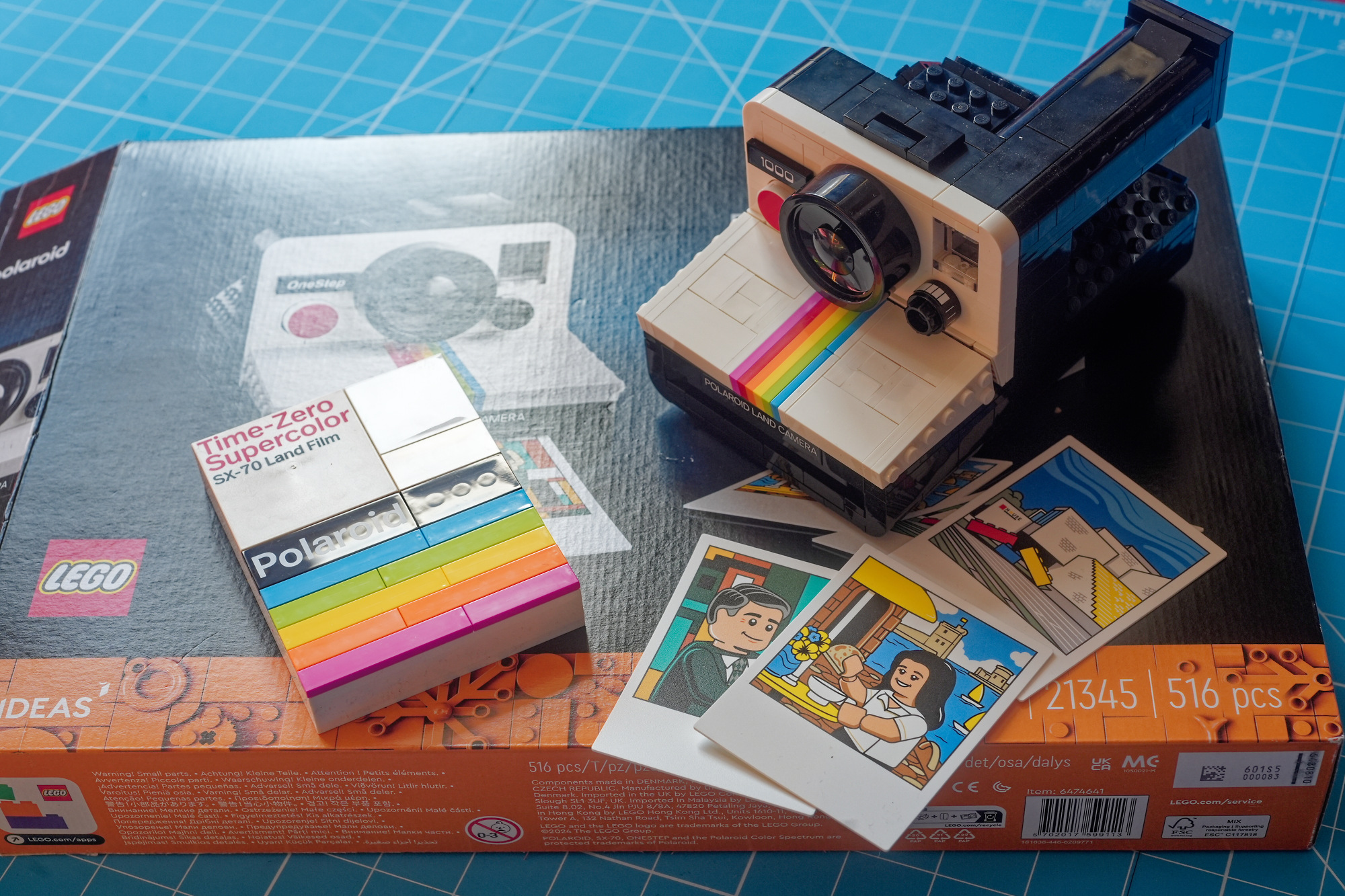
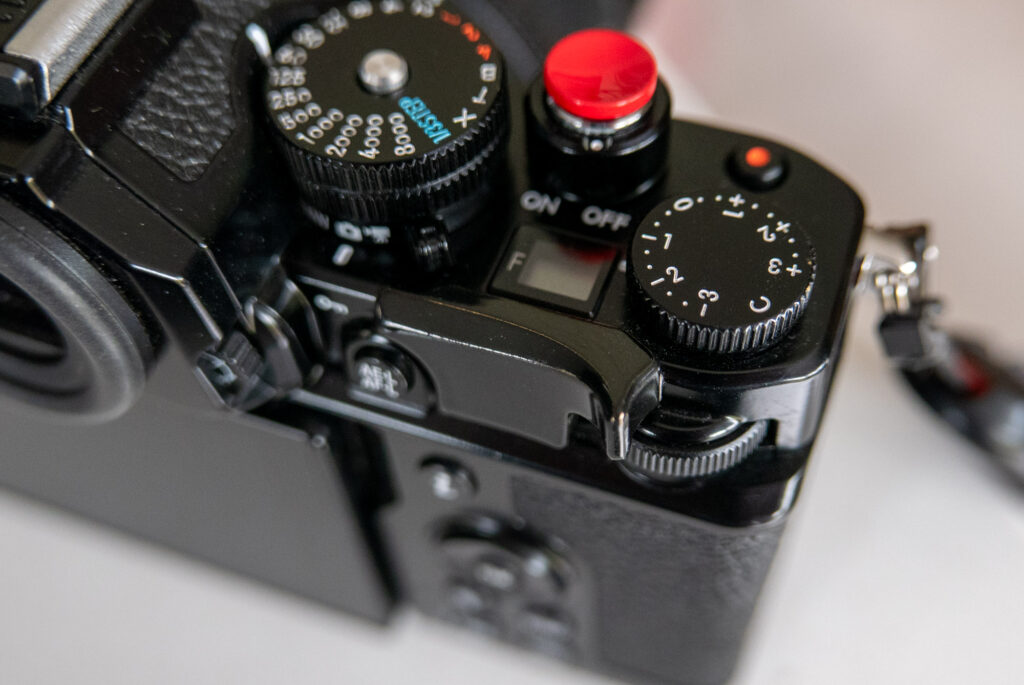
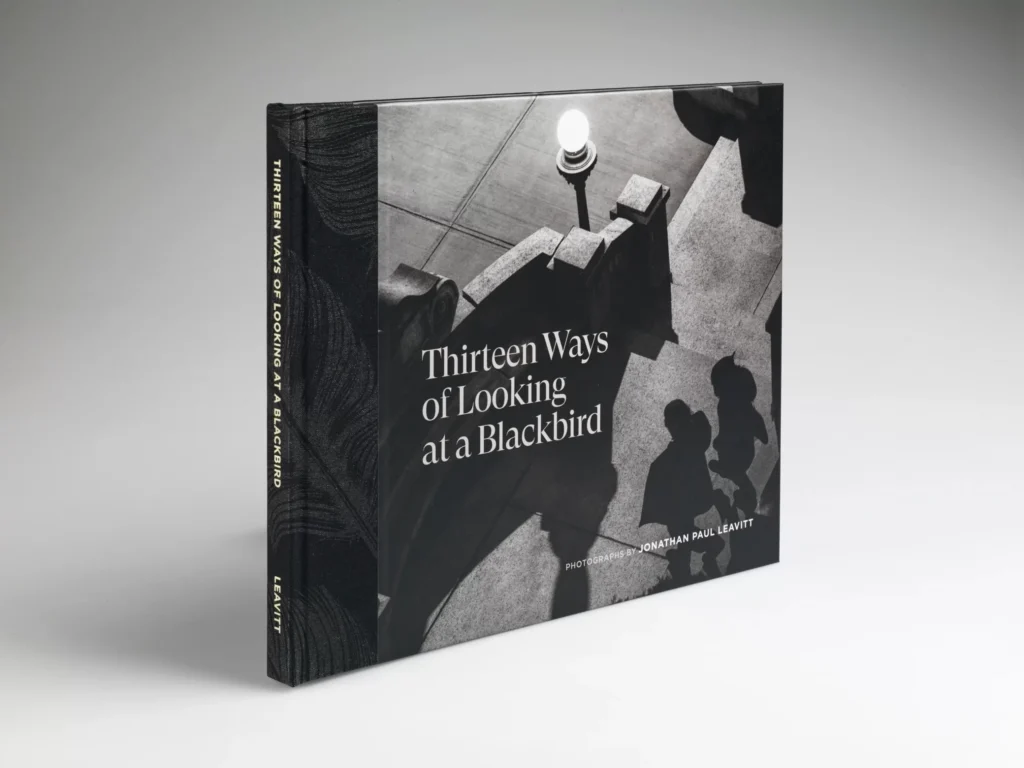
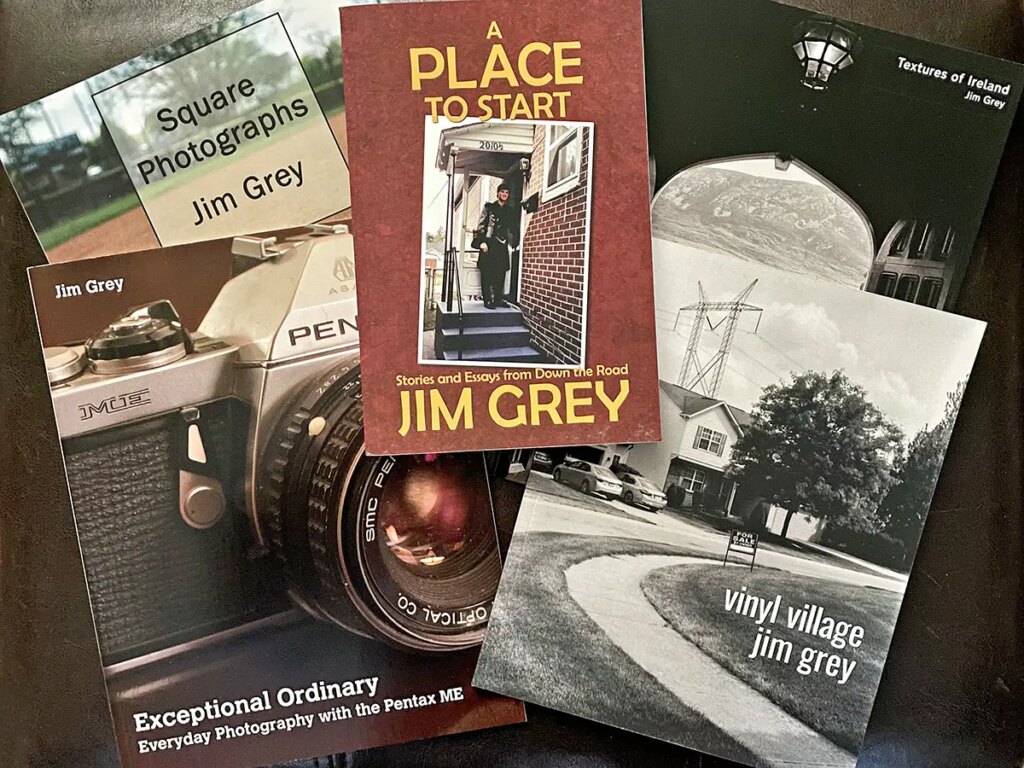
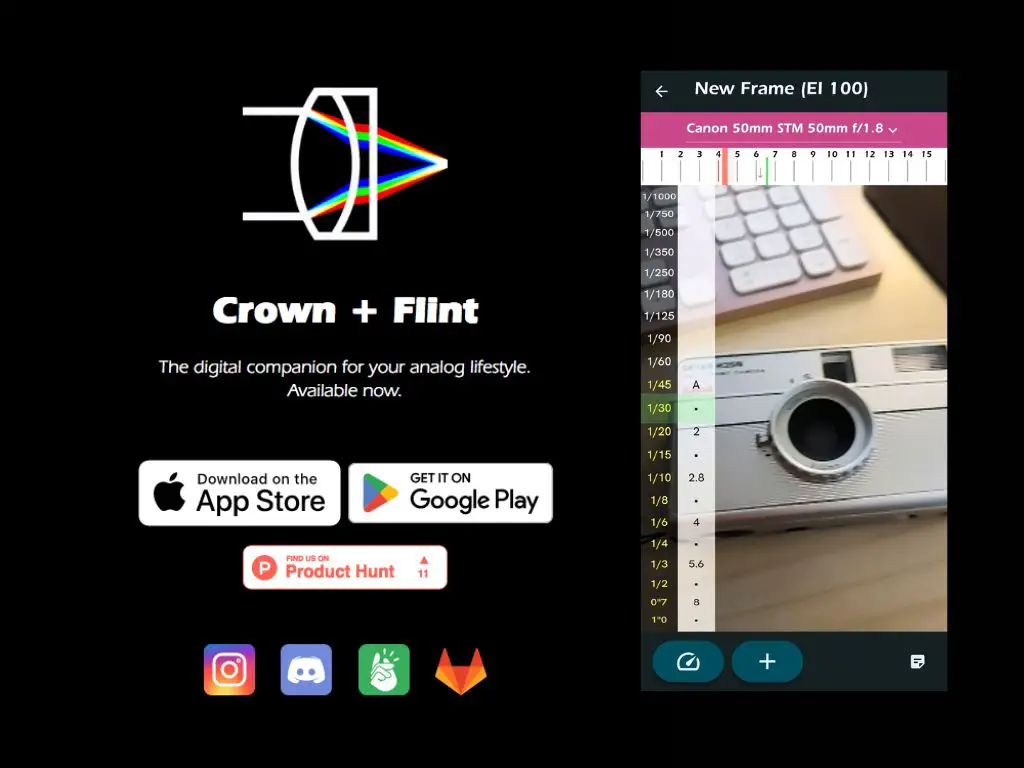




Comments
Martin Siegel on Lego Ideas Polaroid Onestep SX-70 camera – A non-camera camera review
Comment posted: 17/05/2025
https://www.lomography.com/search/photos/27693932?query=Legoroid
It was fun to build. As a kid a good 50 years ago I would have killed for Lego bricks that connected sideways, too.
Geoff Chaplin on Lego Ideas Polaroid Onestep SX-70 camera – A non-camera camera review
Comment posted: 17/05/2025
Comment posted: 17/05/2025
Comment posted: 17/05/2025
Richard Becker on Lego Ideas Polaroid Onestep SX-70 camera – A non-camera camera review
Comment posted: 18/05/2025
Jeffery Luhn on Lego Ideas Polaroid Onestep SX-70 camera – A non-camera camera review
Comment posted: 18/05/2025